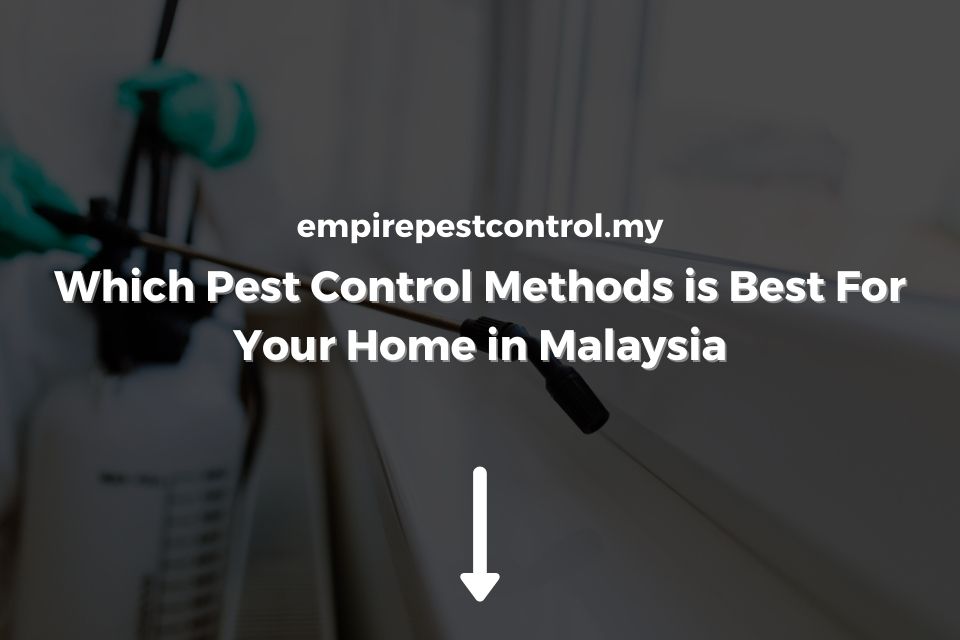Imagine your home crawling with bugs—yikes, right? These little critters can pack a bunch of germs, risking everyone’s well-being. Naturally, folks bust out the cleaning gloves and go on a mission to keep them at bay. Yet, even with all that effort, these sneaky bugs find a way in, highlighting why it’s crucial to team up with a top-notch pest-busting crew in Malaysia. Stick around, and you’ll discover why making this move is a game-changer for your peace of mind.
Considering that different types of pests such as roaches, flies, rodents, and many more, taking action right away is needed. But if you’re a bit tight on the budget, it’s good to know what kind of pest-control methods you can establish in your home. To know more about this, read on below!
Contents
Before You Begin With Pest Control
Before you start implementing these given methods, it’s good that you take the needed preparations. Be sure to do the following before you begin:
- Identify the kind of pest since you can’t just treat your home right away without knowing what you’re dealing with.
- Know their hot spots. List down the areas where you frequently see these pests so you’ll remember where to do the treatment.
- Do background research on the pest you’re dealing with, so you’ll know if what you’re using effectively eliminates them.
Method 1: The Natural Way To Get Rid Of Pests
If you’re someone who values the environment’s safety, then perhaps you should consider opting for natural waste that won’t cause any harm.
When you want to limit the damage made by small pests and animals, then utilize structured predator baits and traps that effectively kill pests. Sodium fluoroacetate is a poison that is biodegradable, which is mixed into the baits to lure in a range of pests.
Other products you can also use in natural methods are:
- Oil sprays,
- Floating row covers
- Parasitic nematodes
- Insecticidal soaps
Method 2: Biological Control For Pest Management
This method is generally used in greenhouses but can be done outdoors too. To biologically control pests, natural enemies of the insects such as parasites and predators are introduced which will interfere with their ability to breed.
Specific beneficial insects will feed on the larvae of the pests you’re trying to get rid or reducing their population growth. This way is environmentally safe for your family, plants, and other natural wildlife compared to pesticides containing potential hazards.
Method 3: Chemical Pesticides
When you want to use a method that will most likely show fast results compared to others, then using chemical pesticides is highly recommended. However, be aware that these pesticides are hazardous and may affect the environment and those people that use them.
Chemical Pesticides are available in liquid, solid, and aerosol forms and may kill pests through respiratory entry (by breathing), oral entry (by the mouth),and dermal entry (by the skin).
Chemical Pesticides are grouped depending on the type of pests they kill, such as:
- Insecticides are to kill insects like beetles, termites, roaches, ants, and many more.
- bactericides for bacteria like fungi and viruses
- herbicides for plants like weeds
Before using pesticides by yourself, always keep in mind to check the label, and avoid contaminating drinks, food, utensils and other items you tend to use lying around.
Method 4: Hygiene Control
Pests don’t usually thrive in places that are frequently cleaned and sanitized; therefore, leave no beverage and food that might attract and encourage pests to grow and reproduce. Control pest infestation at offices and home by implementing good hygiene. Practice cleaning up after meals, throw out any leftover food and residue in the garbage bin secured in plastic wraps.
Conclusion
Controlling pests can be quite challenging but following the right method that’s ideal for the pest problem you’re experiencing is the key to get rid of these little rascals.
The next time you’re planning to find ways to fix your pest-problem, be sure to give this guide a check!

